Scottish Health Survey – telephone survey – August/September 2020: main report
Presents results for the Scottish Health Survey – telephone survey- August to September 2020, providing information on the health and factors relating to health of people living in Scotland.
This document is part of a collection
Chapter 8: Dental Health
This summary covers data collected between the 5th August 2020 and the 23rd September 2020.
The vast majority of adults reported having at least some natural teeth.
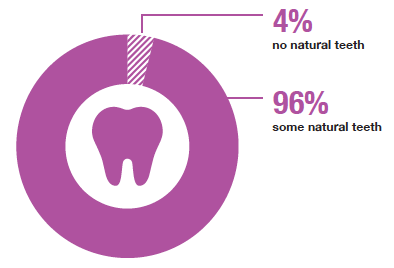
Prevalence of having 20 or more natural teeth was associated with age.
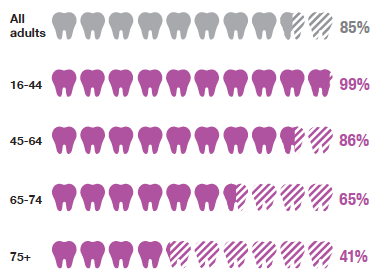
More than one in ten adults reported that they had tooth pain in the month prior to being interviewed.
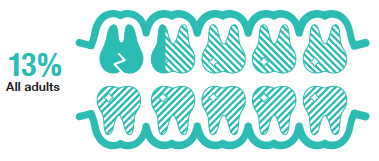
Most adults in Scotland reported having no issues with their mouth, teeth or dentures.
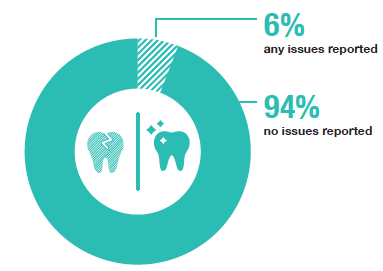
The most common issues adults reported having with their mouth, teeth or dentures were:
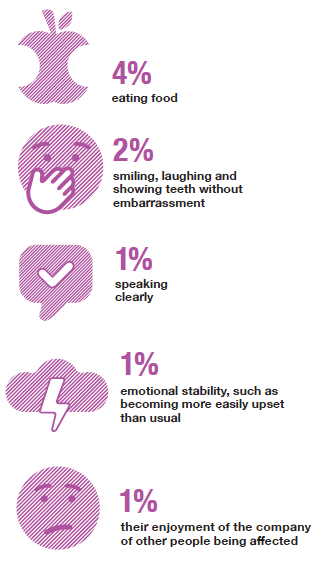
8 Dental Health
Hannah Biggs
8.1 Introduction
Tooth decay is a widespread problem among both children and adults in most industrialised countries[1], yet dental disease is largely preventable. Oral health impacts daily life and wellbeing[2] and in recent years progress has been made in Scotland, with 96% of the population registered with an NHS dentist as at 30th September 2019[3]. However, inequalities remain with around 11% of those aged 75 or over not registered with an NHS dentist as at 30th September 2019[4] and poorer dental health reported among P7 children living in the most deprived areas in 2019[5].
Protecting Scotland’s Future: The Government’s Programme for Scotland 2020-21[6] reiterates the government’s commitment to reform adult dental services to improve the population’s oral health. The Oral Health Improvement Plan[7], which was published in 2018, set out a move towards preventive care and policy development work to develop this was underway throughout 2019 and early 2020. The intention of the preventive policy, under the New Model of Care, is to refocus NHS dental services on identifying oral health risks and to provide support to patients based on a wider range of indicators, including smoking and alcohol, to ensure that treatments are provided in the most effective way for individual patients.
At the end of March 2020, the closure of high street dental services was required as part of the wider response to the COVID-19 pandemic. The focus on tasks that were immediately impacting on the response to the pandemic meant that policy development of the New Model of Care was paused. At the time of data collection (Phase 3 of the Route Map) most dental services were able to reopen but with limited capacity and were not able to offer all non-urgent treatments[8]. From the 1st of November, patients have been able to receive all the treatments that were previously available through the NHS, nevertheless, there will continue to be a reduced volume of patients accessing treatment due to the necessary public health measures, such as physical distancing and the requirements for personal protective equipment.
As stated in the Programme for Government[6], the government is committed to delivering long-term reforms to NHS dental services, and the period after the 1st of November will allow the government and stakeholders to consider the reform necessary to ensure the sustainability of NHS dental services in the future.
This chapter presents findings on the prevalence of natural teeth and tooth pain in the Scottish adult population in August/September 2020 as well as the impacts of issues with the mouth, teeth or dentures on daily life. Information on methods and definitions can be found in the Volume 2: Technical Report.
8.2 Dental Health
The fieldwork period referenced in the following analysis covers from the 5th August 2020 to the 23rd September 2020.
As prevalence of natural teeth tends to be lower in deprived areas where response to this survey was lower than usual, the results in section 8.2.1 may overestimate prevalence. Conversely, prevalence of dental issues tends to be higher in deprived areas and hence the results in sections 8.2.2 and 8.2.3 below may be underestimates.
8.2.1 Number of natural teeth/no natural teeth, August/September 2020, by age and sex
During the fieldwork period, the vast majority of adults reported having at least some natural teeth (96%) while a small proportion had no natural teeth (4%). More than eight in ten adults (85%) reported having 20 or more natural teeth.
Natural teeth prevalence was significantly associated with age. While almost all adults aged 16-74 (92% - 99%) reported having at least some natural teeth, prevalence of natural teeth decreased to 79% among those aged 75 and over. Conversely, adults aged 75 and over were least likely to report having 20 or more natural teeth (41%) while adults aged 16-44 were most likely to report that this was the case (99%).
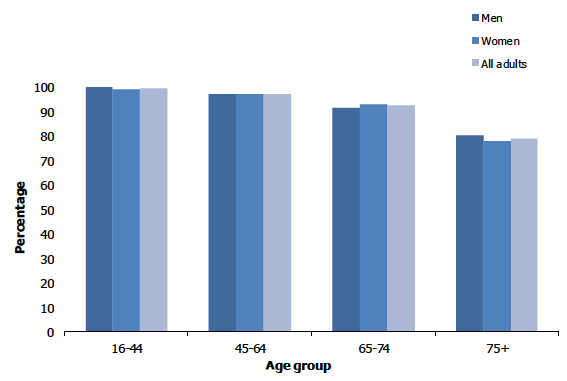
There was no significant difference in natural teeth prevalence by sex with similar patterns by age for both sexes.
Figure, 8A, Table 8.1
8.2.2 Whether had any tooth pain, August/September 2020, by age and sex
During the fieldwork period, the majority of adults (87%) reported that they had no tooth pain in the month prior to being interviewed. While the highest proportion of adults that reported tooth pain in the last month was among those aged 45-64 (15%), there was no clear pattern by age.
There was no significant difference in prevalence of tooth pain by sex. Table 8.2
8.2.3 Issues with mouth, teeth or dentures, August/September 2020, by age and sex
During the fieldwork period, most adults (94%) had no issues with their mouth, teeth or dentures.
The most common issue reported with mouth, teeth or dentures was eating food (4%), followed by smiling, laughing and showing teeth without embarrassment (2%). Other mouth, teeth or denture issues reported by small proportions included not being able to speak clearly (1%), an impact on emotional stability, such as becoming more easily upset than usual (1%) and that these issues affected their enjoyment of the company of other people (1%).
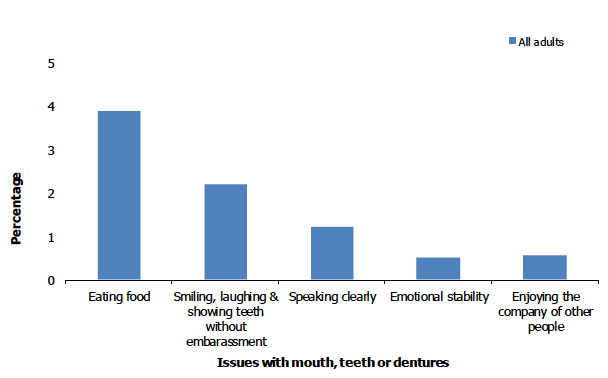
Sex was not a significant determinant of issues with mouth, teeth or dentures. The only issue where prevalence was associated with age was eating food; prevalence increased from 2% among those aged 16-44 to 6% among those aged 75 and over. A similar pattern was evident in women, but there was no pattern by age for men.
Figure 8B, Table 8.3
Table List
Table 8.1 Number of natural teeth/no natural teeth, August/September 2020, by age and sex
Table 8.2 Whether had any tooth pain, August/September 2020, by age and sex
Table 8.3 Issues with mouth, teeth or dentures, August/September 2020, by age and sex
The tables can be found in the main report page under supporting documents.
References and notes
1. World Health Organisation (2012). What is the burden of oral disease? [Online].
2. Oral Health Improvement Plan. Edinburgh: Scottish Government. 2018.
3. Public Health Scotland. Dental Statistics – registration and participation. [Online].
4. Public Health Scotland. Dental Statistics – registration and participation. [Online].
5. ISD Scotland National Dental Inspection Programme (2019).
6. Protecting Scotland, Renewing Scotland: The Government's Programme for Scotland 2020-2021, p. 72 [Online].
7. Oral Health Improvement Plan. Edinburgh: Scottish Government. 2018.
8. Coronavirus (COVID-19): Scotland’s route map. Edinburgh: Scottish Government (2020).
Contact
There is a problem
Thanks for your feedback